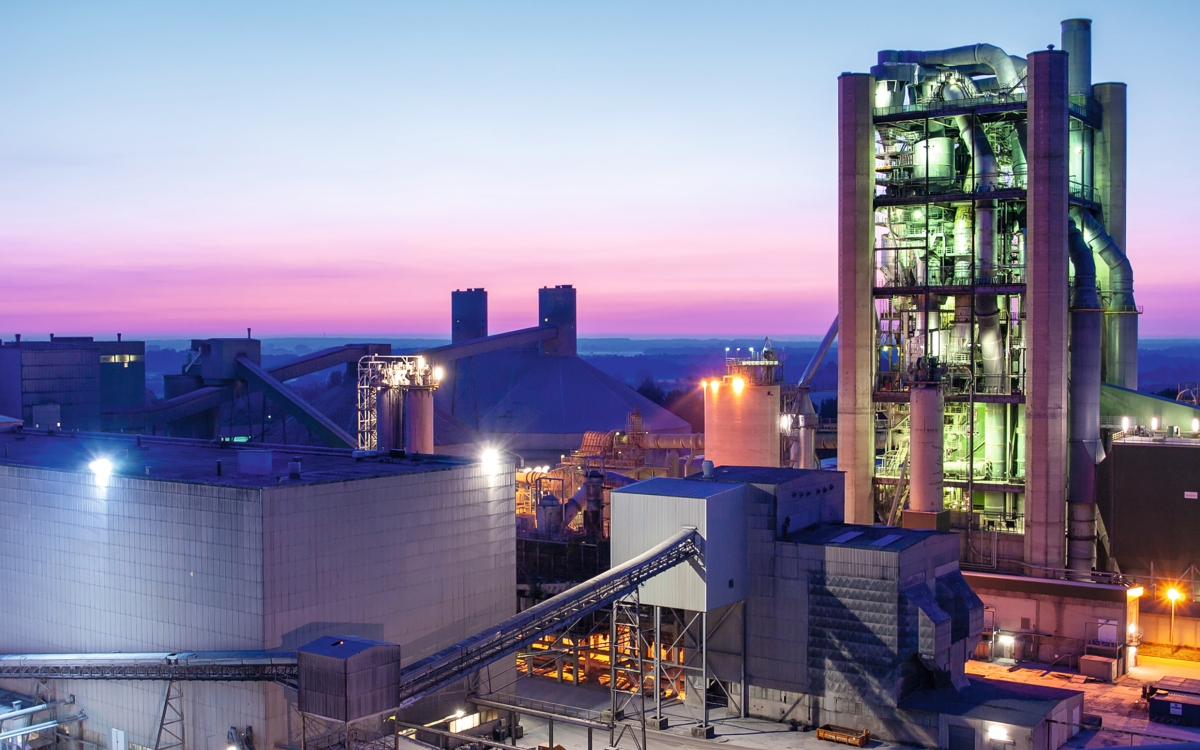The construction sector accounts for an estimated 38 % of global greenhouse gas emissions. It has an essential role to play to accelerate our world’s transition to net zero.
The journey to net zero requires a holistic approach that ranges from adapting our own manufacturing operations all the way to accelerating the introduction of low carbon and circular solutions on the market to enable the low carbon shift across the entire construction value chain. In cement manufacturing, reaching net zero will require the deployment at scale of carbon capture and utilisation or storage (CCUS) technologies.
Carbon capture separates and concentrates CO2 from industrial processes. The CO2 can then be safely stored underground, recycled for applications such as fuels and chemicals, or permanently captured in concrete and other mineral components. The European Commission considers CCUS as one of the seven strategic pillars in their “A clean planet for all” strategy, and the IEA Roadmap for the cement sector projects CCUS being deployed at scale as of 2030.
The challenge around developing and deploying carbon capture projects at industrial scale is that it does not rest on a one-size-fits-all technology. The options for the utilisation and/or storage of CO2 vary enormously from one site to another, including in terms of the regulatory environment and project-specific situations. Moreover, all CCUS projects require cross-sectoral integration of different value chains, either to turn CO2 into a useful feedstock or to transport and store it geologically.
50 shades of CCUS
At Holcim we are committed to decarbonising our cement production, in line with our industry-first 2050 net-zero targets, and we believe that CCUS will be a key enabler. To this end, Holcim is testing the technical and economic feasibility of CCUS in more than fifty projects across Europe, North America and further afield in both Carbon Capture Storage (CCS) and Carbon Capture Utilisation (CCU)
In Europe, Holcim has recently been selected under the EU Innovation Fund for one CCU project in Germany (Carbon2Business) and one CCS project in Poland (Go4ECOPlanet). Through the Innovation Fund, the European Commission supports the large-scale deployment of highly innovative technologies in Europe.
Let’s use Holcim’s Carbon2Business CCU-project in Germany as an example. The project is fully integrated into the larger HySCALE100 project (a recognized IPCEI hydrogen project in Germany), a green hydrogen value chain integrated with e-methanol production. The Carbon2Business project aims at capturing over one million tons of CO2 through the deployment of a technology known as “oxyfuel”, a process during which combustion air is substituted with pure oxygen resulting in a CO2-rich flue gas, which is dried, pressurised, and purified in a subsequent Carbon Processing Unit. In the case of the Carbon2Business project the pure oxygen will be provided by a 2-Gigawatt green hydrogen electrolyser powered by offshore renewable energy, which produces excess oxygen that is recycled in the oxyfuel process.
The resulting green hydrogen and purified CO2 are combined to produce synthetic fuel for the aviation sector for which there is increasing demand regionally.
Carbon2Business is a first-of-its-kind implementation of the oxyfuel technology at a full industrial scale. And one that is fully integrated into a highly innovative regional green hydrogen value chain, born from a cross-industry partnership “Westküste 100” formed between EDF Germany, Holcim Germany, OGE, Ørsted, Raffinerie Heide, Stadtwerke Heide, thyssenkrupp Industrial Solutions and Thüga — together with the Region Heide development agency and the Westküste University of Applied Science.

Is the EU ready for CCUS?
CO2 can be stored permanently geologically or used in a wide variety of applications, ranging from agriculture to fuels or chemicals, with rapidly developing supply and demand value chains. Yet, whether the industry will be able to deploy large-scale innovative CCU projects depends largely on the existence of a coherent legislative frameworks for the full value chain.
We see ourselves at a crossroads on whether innovation in CCU technologies will remain economically feasible in the EU. This is largely the result of contradictory policy choices and a lack of clear direction on how to achieve the overarching goal of decarbonised industrial value chains.
The lack of coherence is blatant. CCU projects are eligible for funding under the EU Innovation Fund and are listed as part of the solutions under the EU Green Deal. And this is confirmed by a rapid growth in demand for CCU as a feedstock. And yet: at least two pieces of legislation are set to undermine the actual business case for industrial CO2 utilisation. A newly proposed 2036 shelf life for the use of industrial CO2 in the production of e-fuels is entirely at odds with the far longer economic cycle of such investments. Moreover, EU ETS rules, disincentivise the conversion of CO2 into an industrial feedstock, as the captured CO2 would still have to be reported as emitted to the atmosphere.
As for all ground-breaking innovation, policy makers should not lose sight of the bigger picture. It remains a fact that both carbon storage and use are needed to eventually reach carbon neutrality. The deployment of CCUS technologies will support the production of alternative e-fuels (via recycled CO2 and renewable hydrogen) – and reduce our dependence on fossil resources.
And let us think further ahead. Today we debate using recycled industrial CO2. But if we invest in this and scale it, tomorrow we can build on this and capture atmospheric or biogenic CO2. Innovation is a gradual process – it evolves one step at a time – unless there are too many regulatory stumbling blocks.

